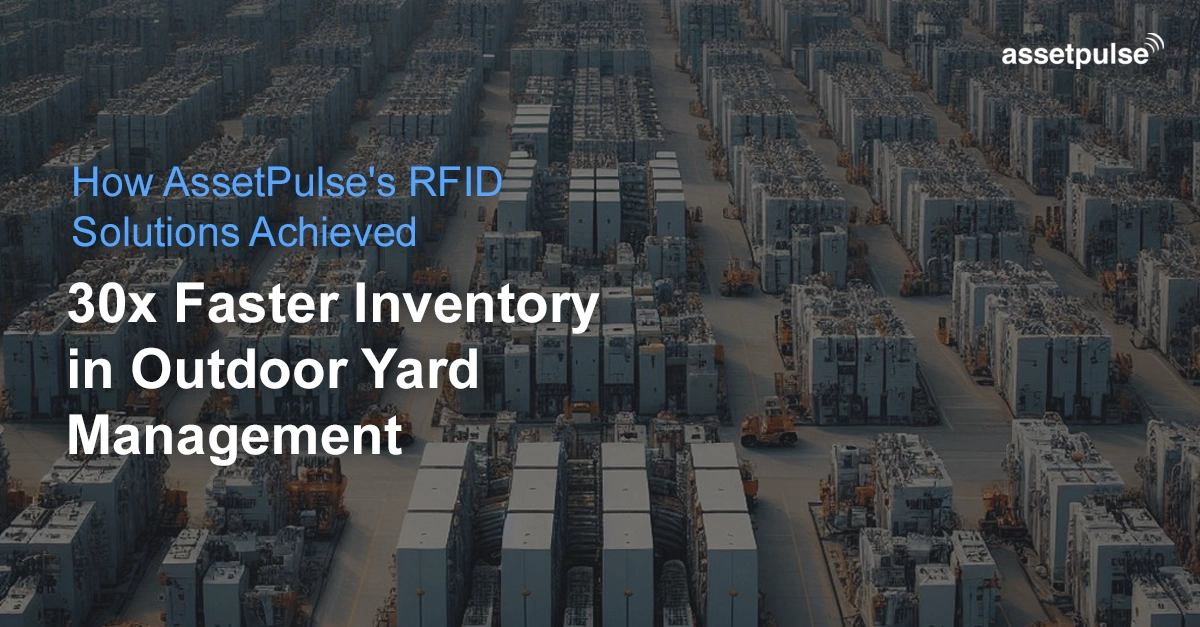Production Managers face immense pressure to keep manufacturing floors running smoothly. Production management – coordinating machinery, tools, materials, and personnel to meet tight production schedules – demands flawless asset management. Yet traditional methods such as manual logs, barcode scanning, and spreadsheets often fall short. These approaches are slow, error-prone, and lack real-time visibility. The result is lost time searching for…
Category: Manufacturing
Explore how asset tracking solutions enhance manufacturing efficiency, reduce downtime, and improve inventory management. Learn best practices for streamlined operations.

How AssetPulse’s RFID Solutions Achieved 30x Faster Inventory in Outdoor Yard Management
Imagine managing a vast outdoor yard filled with hundreds, even thousands, of assets. Keeping track of this inventory is crucial, especially when it comes to performing inventory on a regular basis. This blog post explores the challenges faced by one of our customers and how they achieved a remarkable 30x improvement in outdoor yard management through AssetPulse’s RFID Solutions tailormade…

How RFID helps Track Manufacturing Travelers Easily and Efficiently
A manufacturing traveler is a document that accompanies a product throughout its manufacturing process. It contains all the details about the materials and processes that went into the production of the given product. Once a manufacturer receives an order, they create a detailed work order outlining the production steps. But to ensure smooth manufacturing, they also create a “traveler” document…
Digital Asset Management in Manufacturing: How Smart Tracking Solutions Transform Enterprise Operations
Manufacturing leaders stand at a pivotal moment. Smart asset management technologies are transforming industrial operations at remarkable pace. The market will surge from $17 billion in 2024 to over $26 billion by 2030—an 8.4% annual growth rate (Source: MarketsandMarkets) signaling massive opportunity for early adopters. Companies implementing comprehensive digital asset management report measurable improvements in production performance, equipment longevity, and…

How Automating Device History Records with RFID Facilitates Faster Recalls
In today’s regulated biomedical manufacturing environment, automating device history records with RFID is transforming recall processes. Medical device manufacturers face rigorous demands to maintain precise records from raw material intake through final assembly. Automating these records not only meets regulatory standards but also speeds up recalls, minimizes production downtime, and enhances patient safety. By integrating RFID into your Device History…

